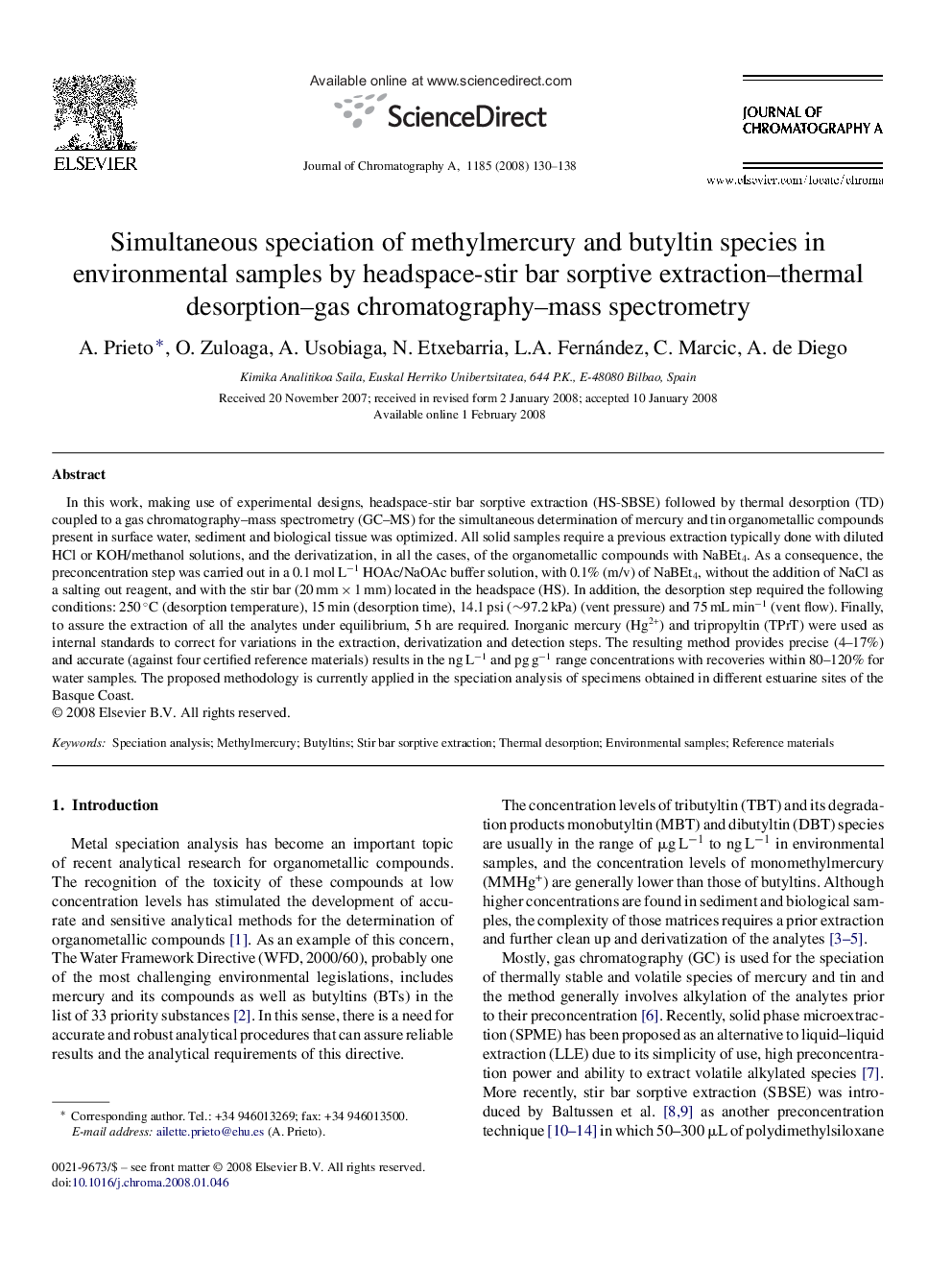| Article ID | Journal | Published Year | Pages | File Type |
|---|---|---|---|---|
| 1211009 | Journal of Chromatography A | 2008 | 9 Pages |
In this work, making use of experimental designs, headspace-stir bar sorptive extraction (HS-SBSE) followed by thermal desorption (TD) coupled to a gas chromatography–mass spectrometry (GC–MS) for the simultaneous determination of mercury and tin organometallic compounds present in surface water, sediment and biological tissue was optimized. All solid samples require a previous extraction typically done with diluted HCl or KOH/methanol solutions, and the derivatization, in all the cases, of the organometallic compounds with NaBEt4. As a consequence, the preconcentration step was carried out in a 0.1 mol L−1 HOAc/NaOAc buffer solution, with 0.1% (m/v) of NaBEt4, without the addition of NaCl as a salting out reagent, and with the stir bar (20 mm × 1 mm) located in the headspace (HS). In addition, the desorption step required the following conditions: 250 °C (desorption temperature), 15 min (desorption time), 14.1 psi (∼97.2 kPa) (vent pressure) and 75 mL min−1 (vent flow). Finally, to assure the extraction of all the analytes under equilibrium, 5 h are required. Inorganic mercury (Hg2+) and tripropyltin (TPrT) were used as internal standards to correct for variations in the extraction, derivatization and detection steps. The resulting method provides precise (4–17%) and accurate (against four certified reference materials) results in the ng L−1 and pg g−1 range concentrations with recoveries within 80–120% for water samples. The proposed methodology is currently applied in the speciation analysis of specimens obtained in different estuarine sites of the Basque Coast.
